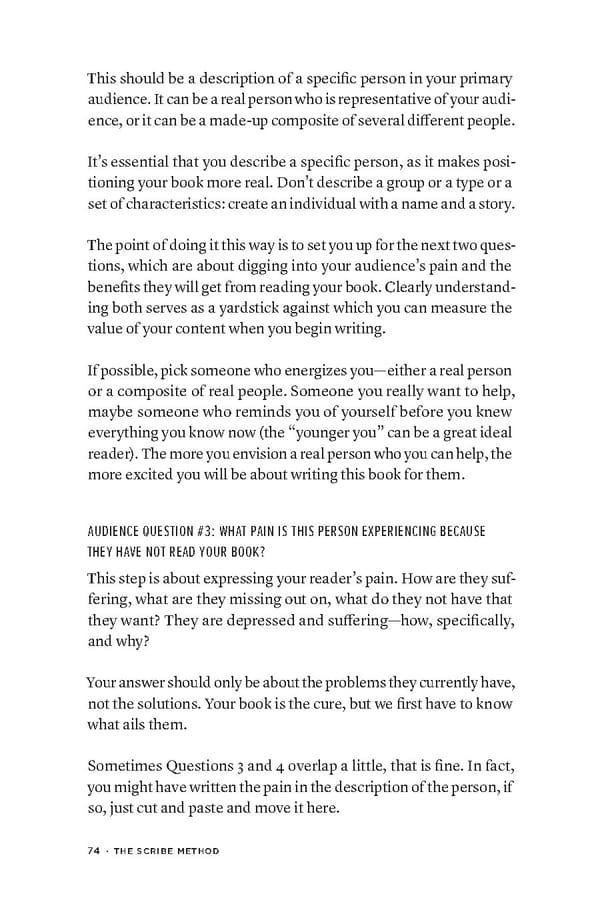This should be a description of a specific person in your primary audience. It can be a real person who is representative of your audi- ence, or it can be a made-up composite of several different people. It’s essential that you describe a specific person, as it makes posi- tioning your book more real. Don’t describe a group or a type or a set of characteristics: create an individual with a name and a story. The point of doing it this way is to set you up for the next two ques- tions, which are about digging into your audience’s pain and the benefits they will get from reading your book. Clearly understand- ing both serves as a yardstick against which you can measure the value of your content when you begin writing. If possible, pick someone who energizes you—either a real person or a composite of real people. Someone you really want to help, maybe someone who reminds you of yourself before you knew everything you know now (the “younger you” can be a great ideal reader). The more you envision a real person who you can help, the more excited you will be about writing this book for them. AUDIENCE QUESTION #3: WHAT PAIN IS THIS PERSON EXPERIENCING BECAUSE THEY HAVE NOT READ YOUR BOOK? This step is about expressing your reader’s pain. How are they suf- fering, what are they missing out on, what do they not have that they want? They are depressed and suffering—how, specifically, and why? Your answer should only be about the problems they currently have, not the solutions. Your book is the cure, but we first have to know what ails them. Sometimes Questions 3 and 4 overlap a little, that is fine. In fact, you might have written the pain in the description of the person, if so, just cut and paste and move it here. 74 · ThE SCriBE METhOD
 The Scribe Method by Tucker Max Page 73 Page 75
The Scribe Method by Tucker Max Page 73 Page 75